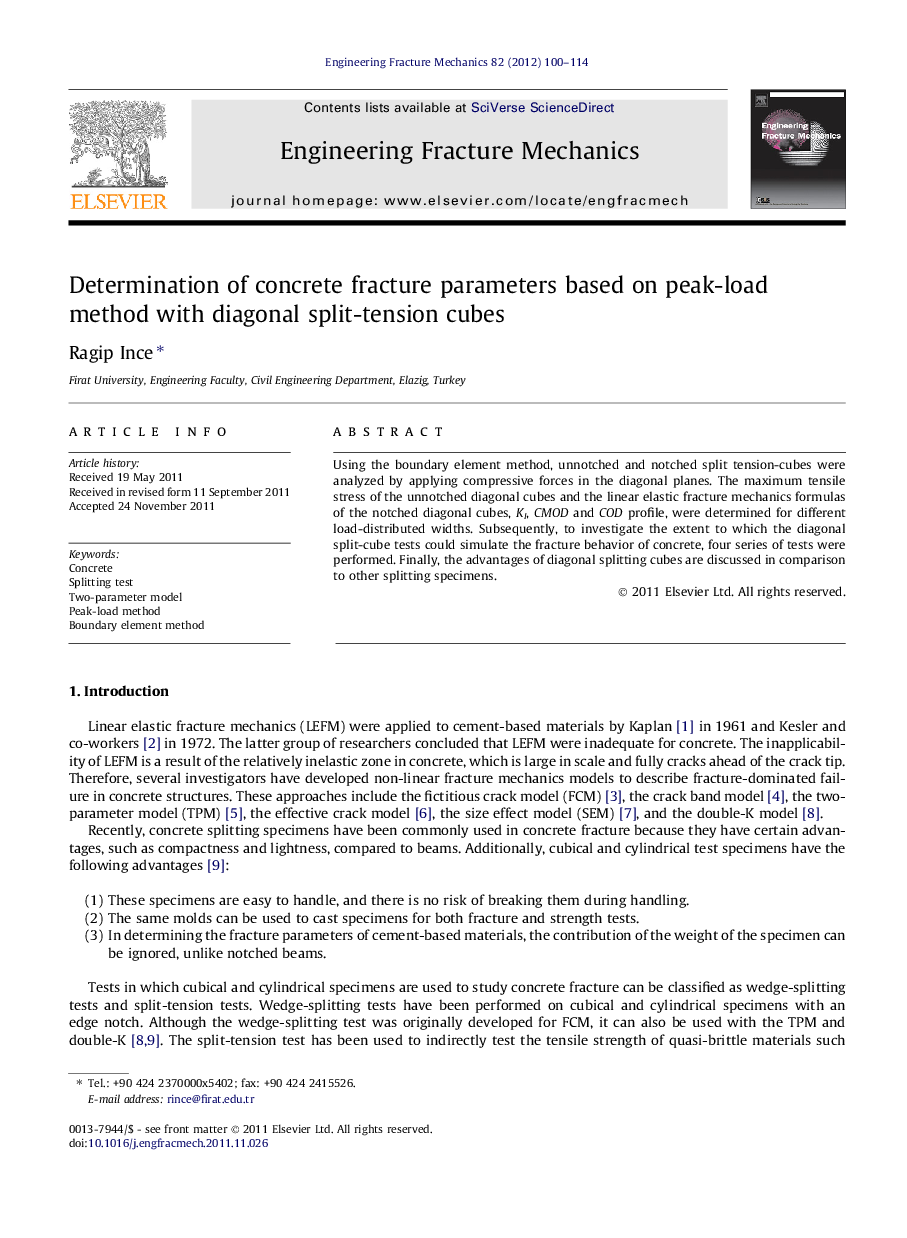| Article ID | Journal | Published Year | Pages | File Type |
|---|---|---|---|---|
| 767343 | Engineering Fracture Mechanics | 2012 | 15 Pages |
Using the boundary element method, unnotched and notched split tension-cubes were analyzed by applying compressive forces in the diagonal planes. The maximum tensile stress of the unnotched diagonal cubes and the linear elastic fracture mechanics formulas of the notched diagonal cubes, KI, CMOD and COD profile, were determined for different load-distributed widths. Subsequently, to investigate the extent to which the diagonal split-cube tests could simulate the fracture behavior of concrete, four series of tests were performed. Finally, the advantages of diagonal splitting cubes are discussed in comparison to other splitting specimens.
► An alternative splitting specimen: the diagonal cubes were first discussed for concrete fracture. ► A formula for the maximum tensile strength was proposed for unnotched diagonal cubic specimens. ► LEKM formulas of the notched diagonal cubes were derived for different load-distributed widths. ► Some advantages of the diagonal splitting cubes have in comparison to other splitting specimens. ► The notched diagonal cubes are especially useful when studying the size effect.
